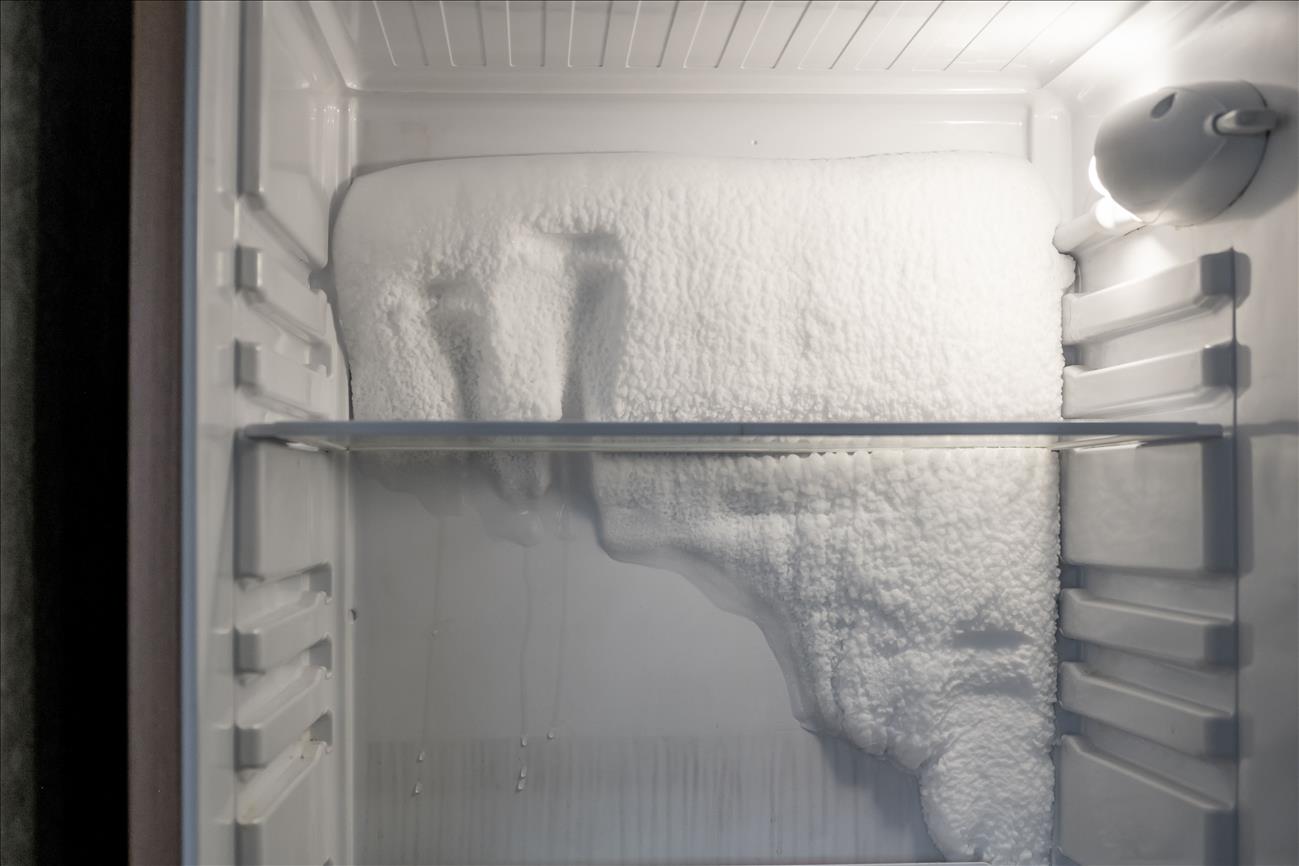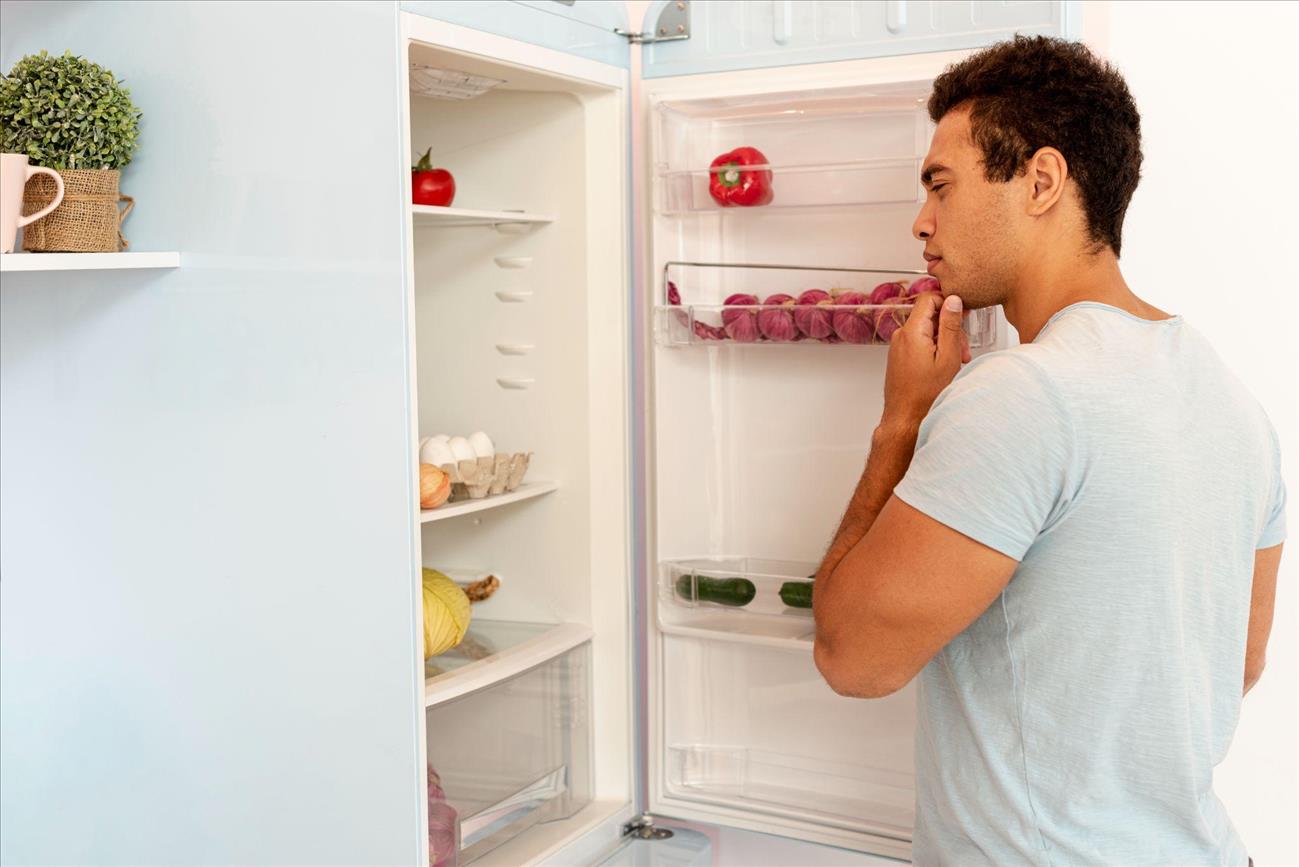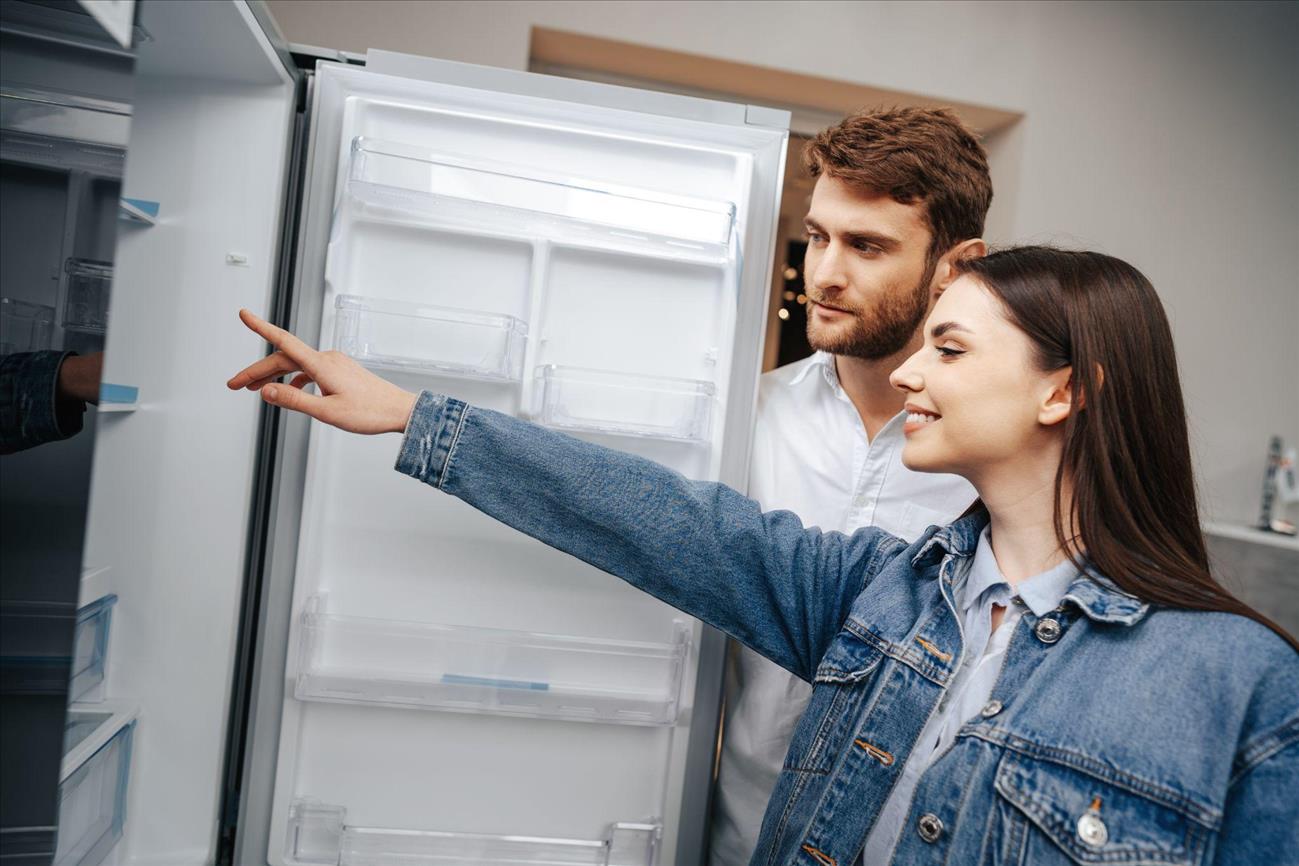Freezer Not Freezing? Causes, Fixes & Maintenance Tips


A freezer not freezing can be a frustrating and costly problem, leading to food spoilage and potential appliance repair expenses. A properly functioning freezer is essential for preserving food, keeping ice available, and ensuring your groceries stay fresh for longer periods. When your freezer stops freezing, it disrupts daily routines and can even lead to health concerns due to food contamination.
Several factors could cause your freezer to stop freezing, ranging from minor issues like incorrect temperature settings to more significant problems such as a faulty compressor. In this guide, we’ll walk you through the most common causes of a non-freezing freezer, troubleshooting steps you can take to fix the issue, and preventive maintenance tips to keep your freezer running efficiently.
By the end of this article, you'll have a clear understanding of why your freezer is not freezing and how to resolve the issue quickly and effectively.
Common Causes of a Freezer Not Freezing
When your freezer is not freezing, it can be due to various issues that disrupt its cooling system. Understanding the root cause can help you troubleshoot the problem effectively. Below are some of the most common reasons why a freezer may stop freezing and what you can do to fix them.
Power Supply Issues
One of the most overlooked reasons for a freezer not freezing is a power supply issue. If your freezer is unplugged or not receiving power, it won’t function properly.
How to Check:
- Ensure the freezer is plugged in securely to a working power outlet.
- Inspect the power cord for any damage or loose connections.
- Check the circuit breaker—a tripped breaker can cut power to the appliance.
- Test the outlet by plugging in another device to verify it’s supplying power.
If the power supply is working but the freezer is still not freezing, move on to the next troubleshooting step.
Thermostat Malfunction
A faulty thermostat can prevent the freezer from reaching the correct temperature. The thermostat controls when the freezer compressor turns on and off. If it's malfunctioning, the freezer may not cool properly.
How to Fix:
- Ensure the thermostat is set correctly—the ideal freezer temperature is 0°F (-18°C).
- Adjust the temperature dial lower and wait a few hours to see if cooling improves.
- Listen for a clicking sound—this indicates the thermostat is working when adjusted.
- If there is no response, the thermostat may be defective and require replacement.
A broken thermostat is a common reason for a freezer not freezing, so checking it early can save time.
Dirty Condenser Coils
Condenser coils help dissipate heat from the freezer, but when they become clogged with dust and debris, they reduce cooling efficiency. Dirty coils force the compressor to work harder, potentially leading to a freezer not freezing properly.
How to Clean Condenser Coils:
- Unplug the freezer for safety.
- Locate the condenser coils at the back or bottom of the unit.
- Use a vacuum or coil brush to remove dust and debris.
- Clean the coils every 6-12 months to maintain efficiency.
Regular maintenance of condenser coils prevents freezing issues and extends the appliance’s lifespan.
Faulty Evaporator Fan
The evaporator fan circulates cold air inside the freezer. If it stops working, the freezer won't distribute cold air properly, leading to uneven cooling or a freezer not freezing at all.
Signs of a Faulty Evaporator Fan:
- No air circulation inside the freezer.
- Loud noises or grinding sounds coming from the freezer.
- Frost buildup around the fan blades, restricting movement.
How to Check and Fix:
- Unplug the freezer and locate the evaporator fan (usually inside the back panel).
- Inspect for obstructions or ice buildup.
- If the fan isn’t spinning, it may need cleaning, lubrication, or replacement.
A malfunctioning evaporator fan is a major reason why a freezer stops freezing. Addressing this issue can restore normal cooling.
Troubleshooting Steps to Fix a Freezer Not Freezing

If your freezer is not freezing, there are several troubleshooting steps you can take before calling a professional. Below, we’ll walk you through a step-by-step process to identify and fix the issue, ensuring your freezer returns to its optimal performance.
Adjusting the Temperature Settings
The first step in troubleshooting a freezer not freezing is to verify that the temperature settings are correctly configured. A slight adjustment can sometimes resolve the issue.
How to Set the Freezer Temperature Properly:
- The ideal freezer temperature is 0°F (-18°C).
- If your freezer has a dial, adjust it to a colder setting and wait a few hours to check if it improves.
- If your freezer has a digital thermostat, ensure it is accurately set and not displaying an error code.
Signs That Temperature Adjustments May Be Needed:
- Soft or partially frozen food.
- Ice cream melting or becoming too soft.
- Increased frost buildup inside the freezer.
If adjusting the temperature doesn’t resolve the problem, continue with the next troubleshooting step.
Ensuring Proper Airflow
Blocked air vents can lead to a freezer not freezing because cold air needs to circulate evenly. If airflow is restricted, some sections of the freezer may freeze while others remain too warm.
How Blocked Vents Affect Cooling:
- Overloaded freezers block air circulation, preventing uniform cooling.
- Placing items too close to the vents can restrict airflow.
- If vents are covered with ice buildup, cold air won’t distribute properly.
How to Arrange Items for Better Airflow:
- Do not overfill the freezer—leave space for air circulation.
- Keep items away from vents to allow cold air to move freely.
- If you notice ice forming near the vents, manually defrost the freezer and check for obstructions.
Ensuring proper airflow is a simple yet effective way to fix a freezer that is not freezing properly.
Cleaning the Condenser Coils
Dirty condenser coils can prevent the freezer from cooling efficiently. Over time, dust and debris accumulate, causing the compressor to work harder and potentially leading to a freezer not freezing issue.
Step-by-Step Guide to Cleaning Condenser Coils:
- Unplug the freezer for safety.
- Locate the condenser coils (usually at the back or bottom of the freezer).
- Use a coil brush or vacuum to remove dust and debris.
- Wipe the area with a damp cloth to remove any remaining dirt.
- Plug the freezer back in and monitor its cooling performance.
Tools Needed:
- Vacuum cleaner with a brush attachment.
- Coil brush (available at hardware stores).
- Damp microfiber cloth.
It’s recommended to clean the condenser coils every 6-12 months to prevent cooling issues.
Inspecting the Door Seal
A damaged or loose door seal (gasket) can cause cold air to escape, leading to a freezer not freezing properly.
Signs of a Broken or Loose Gasket:
- Frost forming around the door edges.
- The freezer door is not sealing properly when closed.
- Increased energy consumption due to cold air loss.
How to Test and Replace a Freezer Door Seal:
- Perform the Dollar Bill Test—close the door on a dollar bill and try to pull it out. If it slides out easily, the seal is weak.
- Inspect for cracks, gaps, or loose areas around the seal.
- Clean the seal with warm soapy water to remove debris and improve suction.
- If the seal is damaged, replace it with a new gasket available from appliance stores.
A proper door seal ensures that your freezer maintains the right temperature and prevents warm air from entering.
Checking for Frost Buildup
Excessive frost buildup inside the freezer can block airflow and prevent it from cooling efficiently, leading to a freezer not freezing problem.
How Ice Buildup Affects Cooling Performance:
- Ice can clog vents, restricting airflow.
- It may block the evaporator fan, reducing cold air circulation.
- Thick frost layers force the compressor to overwork, reducing efficiency.
How to Defrost the Freezer Manually:
- Unplug the freezer and remove all food.
- Leave the freezer door open to allow ice to melt.
- Place towels around the freezer to soak up excess water.
- For faster defrosting, place a bowl of hot water inside the freezer or use a hairdryer on low heat (keep it away from water).
- Wipe the interior dry and plug the freezer back in.
Regularly defrosting your freezer prevents frost buildup and ensures it continues to function correctly.
When to Call a Professional
If you've tried all the troubleshooting steps and your freezer is not freezing, it may be time to call a professional. Some issues require expert repair, especially if they involve electrical components, refrigerant systems, or major mechanical failures.
Signs That Indicate a Major Problem
Certain problems are beyond DIY fixes and require professional attention:
- Compressor Failure – If the freezer is running but not cooling, the compressor might be faulty. A non-functioning compressor won’t circulate refrigerant properly, causing a freezer not freezing issue.
- Refrigerant Leak – If you hear a hissing sound or notice a chemical smell, the refrigerant may be leaking. This requires a licensed technician to diagnose and recharge the system.
- Faulty Control Board – Modern freezers rely on electronic control boards. If the freezer doesn’t respond to temperature changes or turns off unpredictably, a control board failure could be the cause.
- Broken Start Relay – If the freezer clicks but doesn’t start cooling, the start relay (which helps power the compressor) might need replacement.
DIY vs. Professional Repair: Cost vs. Benefit
- DIY Fixes like cleaning coils, checking door seals, or adjusting temperature settings are free or low-cost solutions.
- Professional Repairs for issues like compressor replacement ($300-$600) or refrigerant leaks can be expensive but may extend your freezer's lifespan.
- If repair costs exceed 50% of a new freezer's price, consider replacing the appliance.
Finding a Reliable Appliance Repair Technician
- Look for certified professionals specializing in freezer repair.
- Read customer reviews to find reputable services.
- Compare multiple quotes to get the best deal.
- Ensure the technician offers warranties on parts and labor.
Preventive Maintenance Tips

Proper maintenance is key to avoiding issues like a freezer not freezing. Regular care helps extend the lifespan of your appliance, improve energy efficiency, and prevent costly repairs. Here are some essential freezer maintenance tips to keep it running smoothly.
Regularly Cleaning the Freezer
Regular freezer cleaning prevents ice buildup, odor formation, and clogged airflow, which can lead to freezing issues. A dirty freezer may struggle to maintain the correct temperature, causing cooling inefficiencies.
Best Cleaning Practices:
- Unplug the freezer before cleaning for safety.
- Remove all food items and store them in a cooler.
- Use a mixture of warm water and baking soda to clean the interior.
- Wipe down shelves, drawers, and walls with a microfiber cloth.
- Clean the door seal (gasket) to remove dirt and prevent air leaks.
- Plug the freezer back in and let it reach the proper temperature before restocking.
Cleaning every 2-3 months helps maintain optimal cooling performance and prevents a freezer not freezing issue.
Keeping the Freezer Well-Stocked
A well-stocked freezer retains cold air better than an empty one, reducing temperature fluctuations and improving energy efficiency.
How to Maintain the Right Balance:
- Avoid an empty freezer—if you don’t have much food, store bags of ice to stabilize temperature.
- Don’t overfill—leave space for proper airflow.
- Arrange food items strategically, placing frequently used items at the front for easy access.
A properly stocked freezer operates efficiently, reducing strain on the compressor and preventing issues like a freezer not freezing.
Checking Door Seals Periodically
A damaged door seal allows cold air to escape, making it harder for the freezer to maintain freezing temperatures.
How to Ensure the Gasket is Airtight:
- Perform the dollar bill test—close the door on a bill and try to pull it out. If it slides out easily, the seal is weak.
- Clean the gasket with warm soapy water to remove dirt and improve suction.
- Inspect for cracks, tears, or looseness—replace the gasket if necessary.
Checking the door seal regularly prevents cold air leaks and helps avoid a freezer not freezing properly.
Avoiding Overloading
Overloading a freezer blocks vents, restricts airflow, and reduces cooling efficiency, which may result in a freezer not freezing properly.
Tips to Avoid Overloading:
- Leave 1-2 inches of space around vents for air circulation.
- Distribute food evenly to maintain balanced cooling.
- Store food in sealed containers to prevent freezer burn and maintain quality.
A well-organized freezer operates efficiently, keeping food properly frozen and preventing cooling issues.
Conclusion
A freezer not freezing can be frustrating, but understanding the possible causes helps in troubleshooting. From checking the thermostat settings and ensuring proper airflow to cleaning the condenser coils and inspecting the door seal, regular maintenance is key to keeping your freezer in top shape.
If you’ve tried these steps and your freezer still isn’t freezing, it may be time to call in a professional. Ignoring the issue can lead to food spoilage and costly repairs down the line.
To prevent future problems, keep your freezer clean, well-ventilated, and properly loaded—not too full or too empty. Regular maintenance can go a long way in extending its lifespan.
If DIY fixes don’t work, don’t hesitate to contact an expert. A quick professional diagnosis can save you time, money, and the headache of dealing with a malfunctioning freezer.
